Removal Procedure
Tools Required
| • | J 24402-A Glass Sealant Remover (Cold Knife) |
| • | J 39032 Stationary Glass Removal Tool |
- Place protective coverings around the window removal area.
- Apply masking tape to the painted surfaces around the windshield in order to prevent damage to the paint.
- Remove the wiper arm and blade assemblies. Refer to Windshield Wiper Arm Replacement in Wipers Washer Systems.
- Remove the air inlet grille panel (1). Refer to Air Inlet Grille Panel Replacement in Body Front End.
- Remove the left and right side reveal moldings. Refer to Windshield Reveal Molding Replacement
- Disconnect electrical connectors.
- Remove the rearview mirror. Refer to Inside Rearview Mirror Replacement .
- Remove the windshield pillar trim (1). Refer to Windshield Pillar Garnish Molding Replacement in Interior Trim.
- Use the J 24402-A in order to cut the top of the windshield and the sides of the windshield from the pinchweld.
- From the inside of the vehicle, use the J 39032 in order to cut the lower bead from the pinchweld.
- If you replace the windshield, transfer the rain sensor. Refer to Outside Moisture Sensor Replacement .
- With the aid of an assistant, remove the windshield from the vehicle.
- The following components may reveal the causes of a broken windshield:
- Look for any of the following conditions in order to prevent breakage of the windshield:
- Inspect the condition of the windshield opening.
- Clean the surface of the window to which the new urethane adhesive will contact.
- Thoroughly shake the container of pinchweld primer (#3 black).
- Use a new dauber in order to apply the primer to the primed surface of the flange (1) in the bonding area.
- Allow approximately 10 minutes for drying the primer.
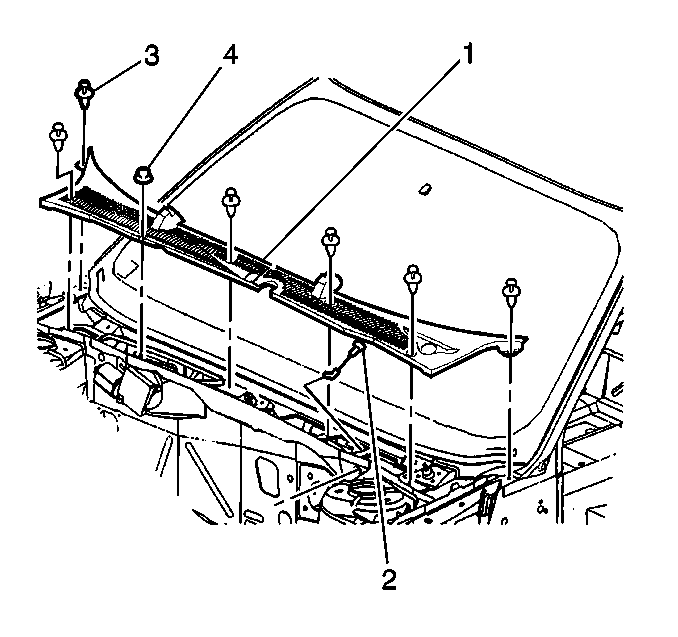
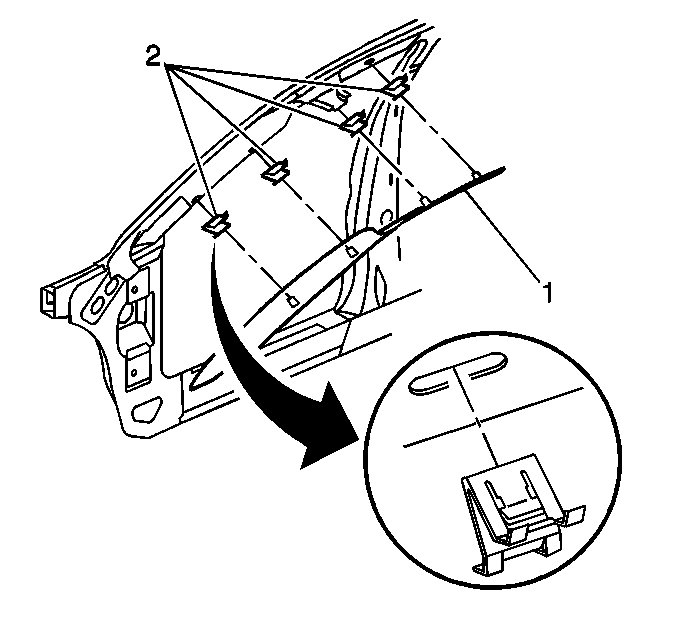
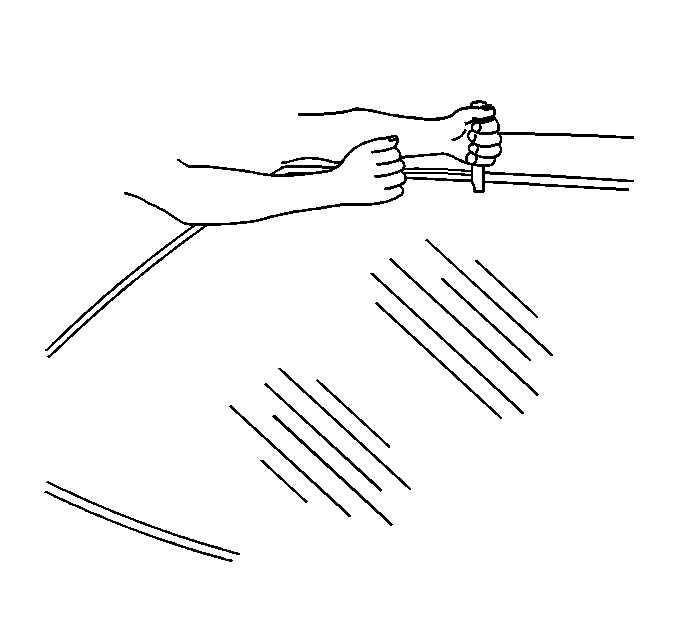
Caution: When working with any type of glass or sheet metal with exposed or rough edges, wear approved safety glasses and gloves in order to reduce the chance of personal injury.
Caution: If broken glass falls into the defroster outlets, it can be blown into the passenger compartment and cause personal injury.
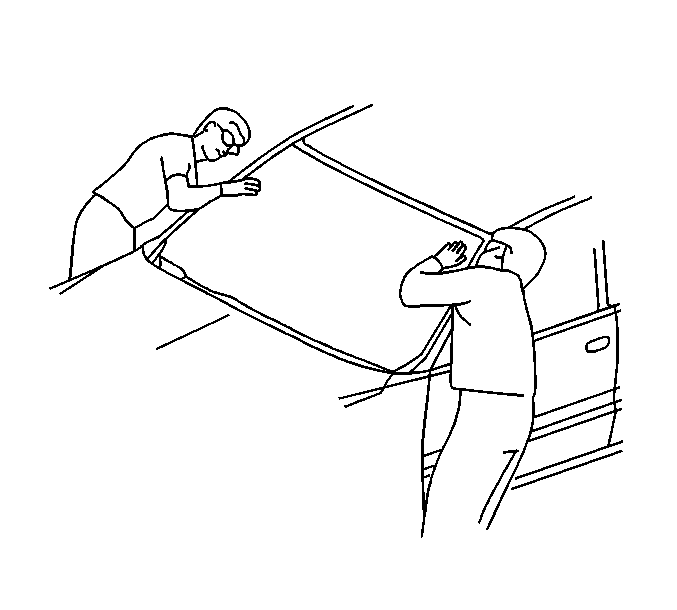
| • | The flange of the windshield opening |
| • | The windshield reveal molding |
| • | The windshield |
| • | The acoustic strip |
| • | A high weld |
| • | Solder spots |
| • | Hardened spot weld sealer |
| • | An obstruction or irregularity in the pinchweld flange |
Important: The Extended Method is the preferred method.
Determine the proper installation method. Refer to Short Method Description and Extended Method Description .
Clean around the edge of the inside surface using a clean isopropyl alcohol dampened cloth. Use GM Window Cleaner P/N 1050427 or the equivalent.
Important: If corrosion of the pinchweld is present, or if sheet metal repairs or replacements are necessary, refinish the pinchweld in order to present a clean primer only surface. If paint repairs are necessary, mask the pinchweld bonding area prior to the application of the color coat in order to provide a clean primer only surface. Use materials such as BASF DE17, DuPont 2610, PPG DP40, or equivalent products in this application.
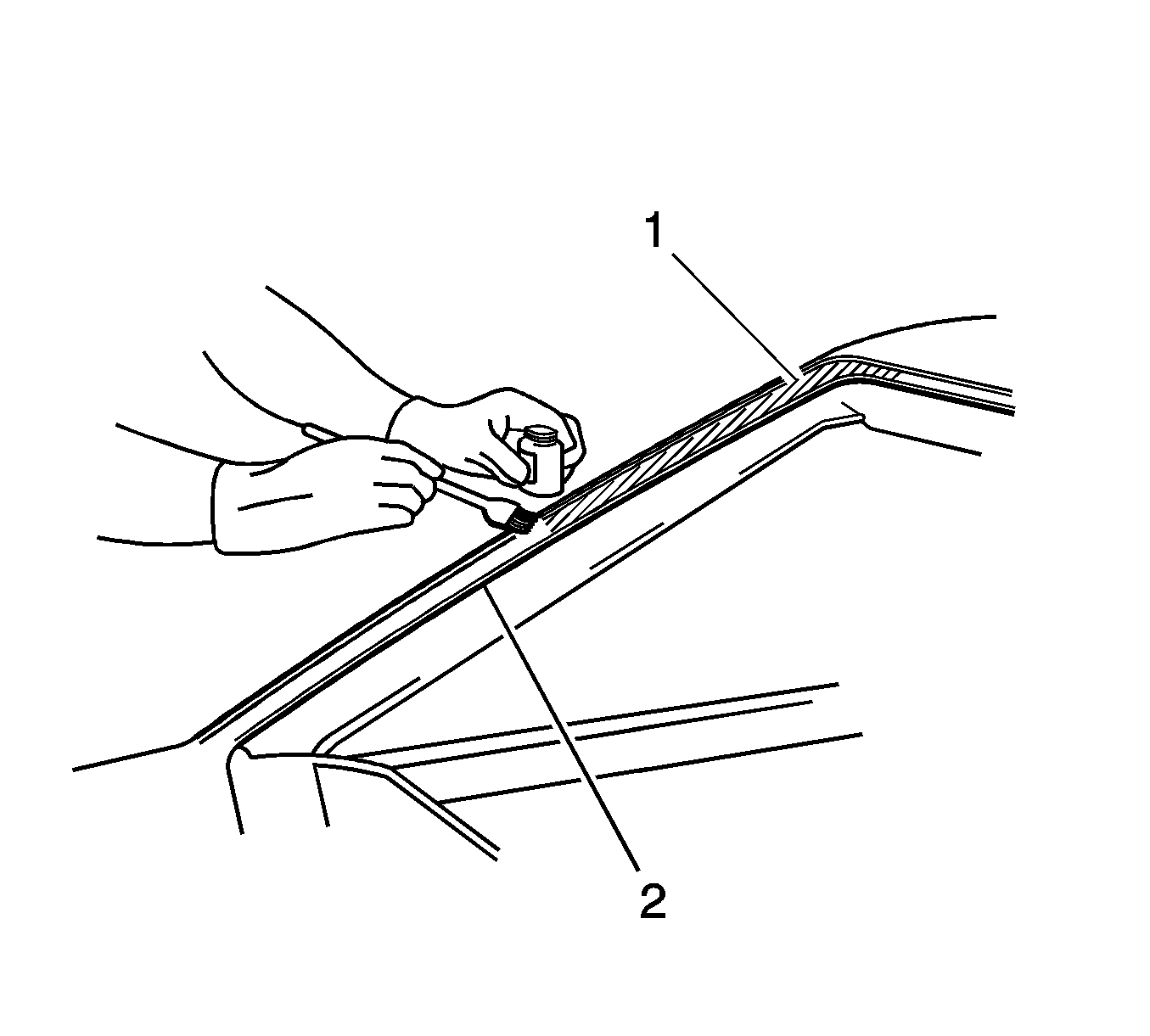
Installation Procedure
Tools Required
J 24811 Adhesive Dispensing Gun
- With an assistant, dry fit the window in the opening in order to determine the correct position.
- Use masking tape (1, 2) in order to mark the location of the window in the opening.
- Slit the masking tape (1, 2) at the window edge.
- Remove the window from the opening.
- Place the windshield on a clean, protected surface.
- When reusing the original windshield, remove all but a thin film of the existing urethane adhesive from the windshield.
- Clean the inside surface of the windshield with GM glass cleaner P/N 1050427 or the equivalent.
- Perform the following steps:
- Install the upper reveal molding to the edge of the windshield, as necessary. Refer to Windshield Reveal Molding Replacement .
- Install the acoustic strip (2) with a gap of less than 20 mm (0.08 in) or less gap (3) to the dashed line (1) painted on the windshield.
- Using a new dauber, apply the windshield prep (#1clear) around the entire perimeter of the inner surface of the glass to an area approximately 10-16 mm (3/8-5/8 in) wide.
- Apply windshield prep (#1 clear) to any exposed edges of the window.
- Immediately wipe the primed area with a lint-free cloth.
- Thoroughly shake the container of primer (#2 black).
- Use a new dauber in order to apply the windshield primer (#2 black) to the areas to which you applied the windshield prep (#1 clear).
- Allow approximately 6 minutes for drying the primer.
- Cut the tip of the applicator nozzle of the J 24811 in order to provide a bead of adhesive approximately 12-18 mm (½-5/8 in).
- Apply the urethane adhesive to the inner surface of the windshield.
- With the aid of an assistant, install the windshield into the opening.
- Tape (1, 2) the windshield to the body in order to minimize movement.
- Remove any excess urethane that squeezed out from the body.
- Immediately use a soft spray of warm water to water test the windshield.
- Inspect the windshield for leaks.
- If a leak is detected, use a plastic paddle in order to apply urethane adhesive to the leak point.
- Cure the adhesive.
- Install the windshield side reveal molding to the windshield. Refer to Windshield Reveal Molding Replacement
- Install the air inlet grille panel screen and the ramps to the cowl area. Refer to Air Inlet Grille Panel Replacement in Body Front End.
- Install the wiper arm and blade assemblies. Refer to Windshield Wiper Arm Replacement in Wipers Washer Systems.
- Install left and right windshield pillar trim. Refer to Windshield Pillar Garnish Molding Replacement in Interior Trim.
- Install rear view mirror. Refer to one of the following procedures:
- Connect the electrical connectors.
- Remove the tape and clean any residue from the glass and painted surface.

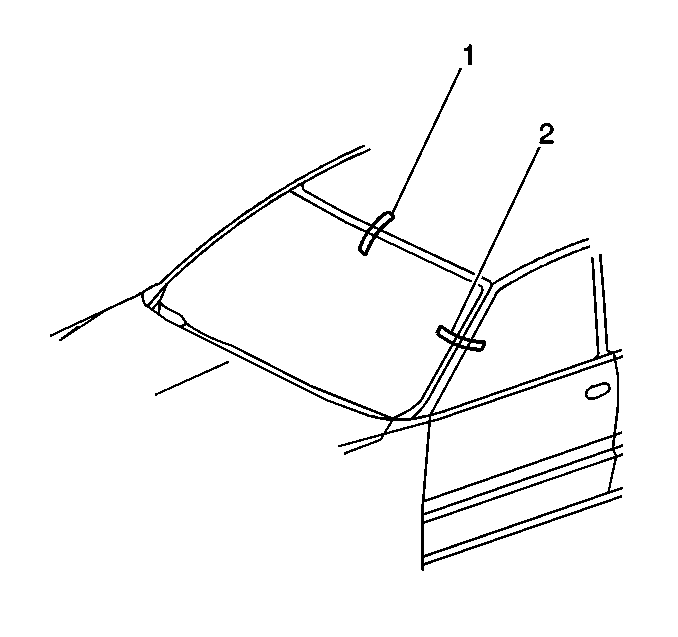
The inside of the windshield faces up.
| 8.1. | Remove all but a thin film of the existing bead of adhesive from the pinchweld. |
Do not leave any mounds or loose pieces of adhesive.
| 8.2. | Shake well the container of pinchweld primer (#3 black). |
| 8.3. | Use a new dauber in order to apply the primer to any exposed painted surfaces or scratches in the flange in the bonding area. |
| 8.4. | Allow approximately 10 minutes for drying the primer. |
Important: Replace the reveal molding, if the reveal molding has damage.

Notice: Failure to install the acoustic strip could cause windshield breakage.
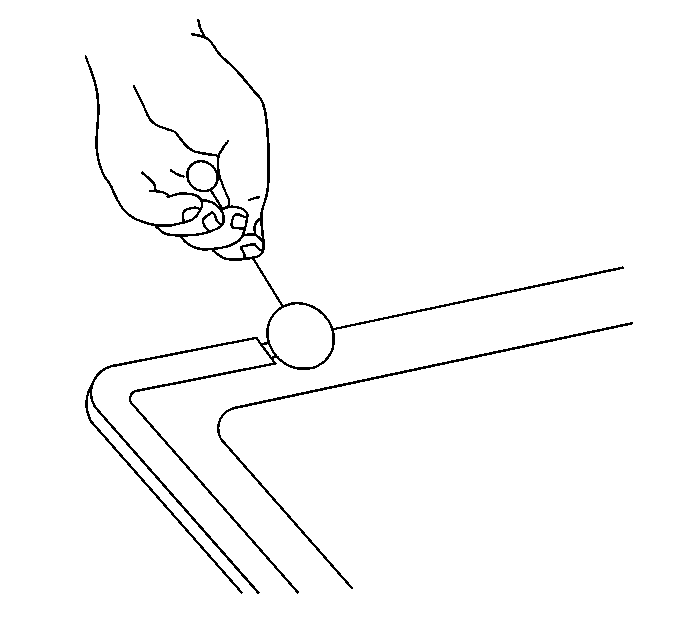
Caution: Failure to prep the area prior to the application of primer may cause insufficient bonding of urethane adhesive. Insufficient bonding of urethane adhesive may allow unrestrained occupants to be ejected from the vehicle resulting in personal injury.
Important: Take care in order to prevent the windshield prep (#1 clear) from running into the vision area of the window. This primer dries almost instantly. The primer may stain viewing area.
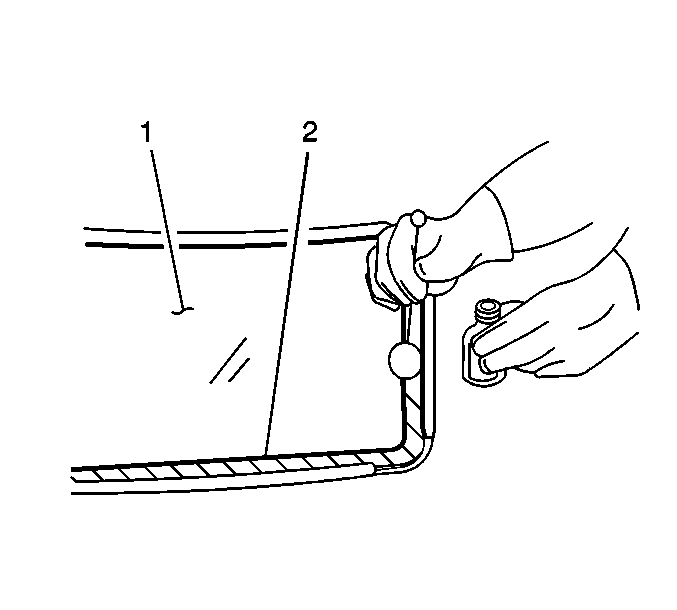
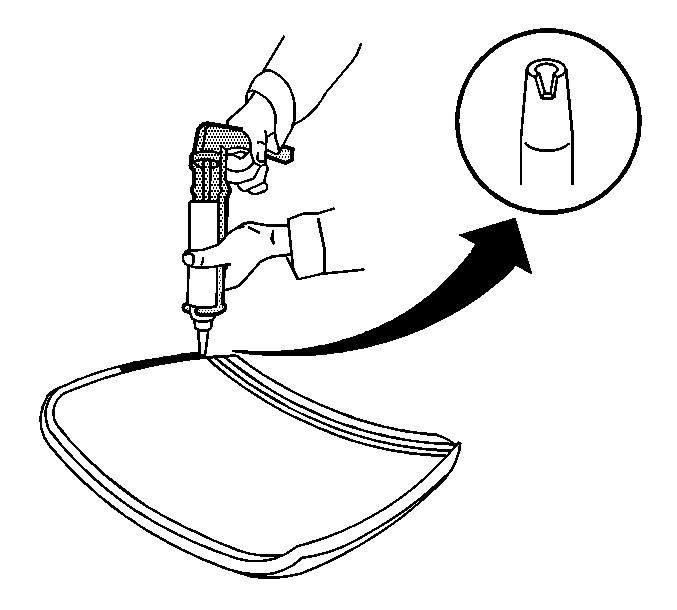
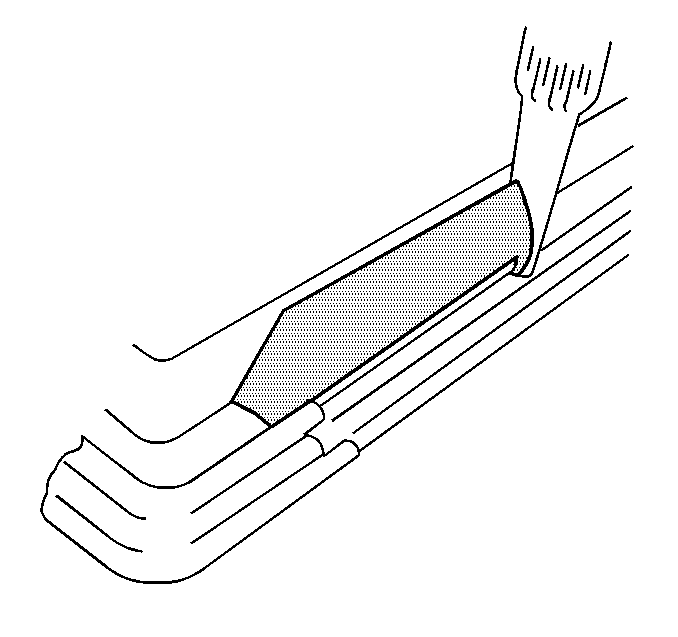
Use the inside edge of the upper reveal molding as a guide.


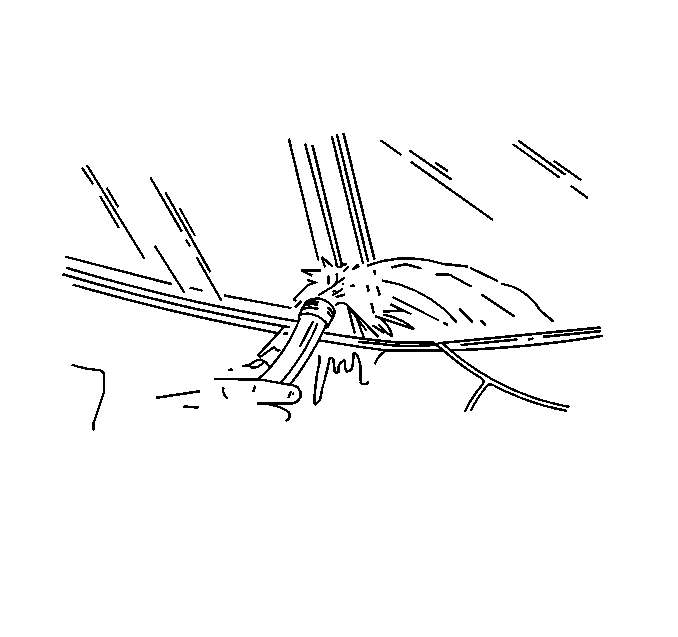
Important: DO NOT direct a stream of high pressure water at the fresh urethane adhesive.
Warm water accelerates the cure of the urethane adhesive.
Important: Do not drive the vehicle. Do not use compressed air in order to dry the urethane adhesive.
| • | Allow the vehicle to remain at a room temperature of 22°C (72°F) at 20 percent relative humidity. |
| • | Allow a minimum of 6 hours for moisture-curing of the urethane adhesive. |
| • | Allow a minimum of 1-1.5 hours for chemical-curing of the urethane adhesive. |
